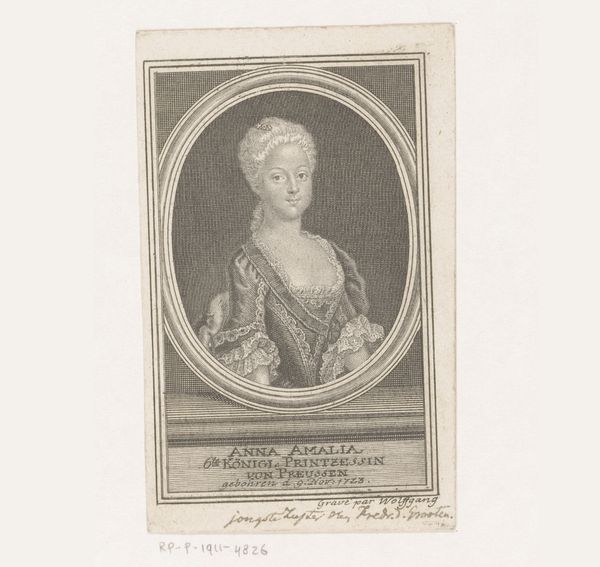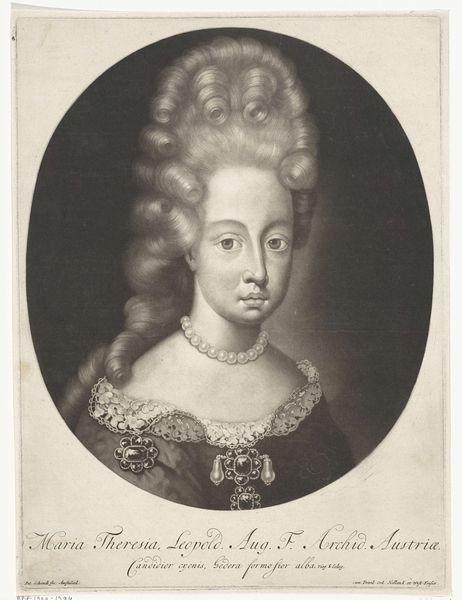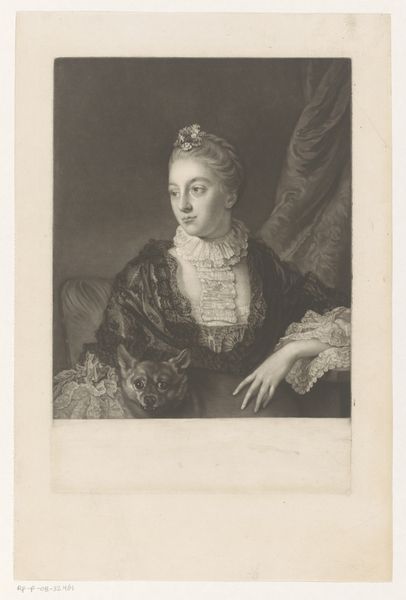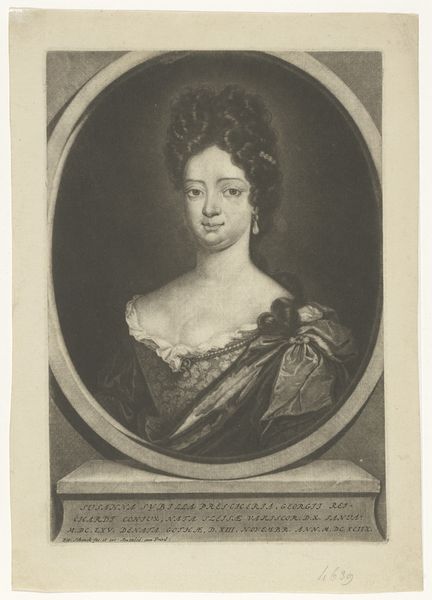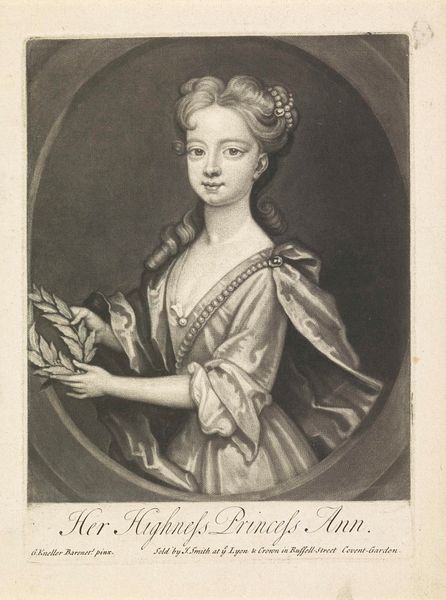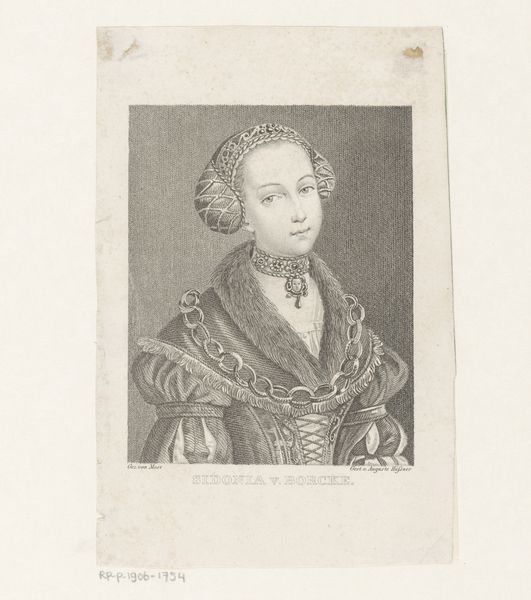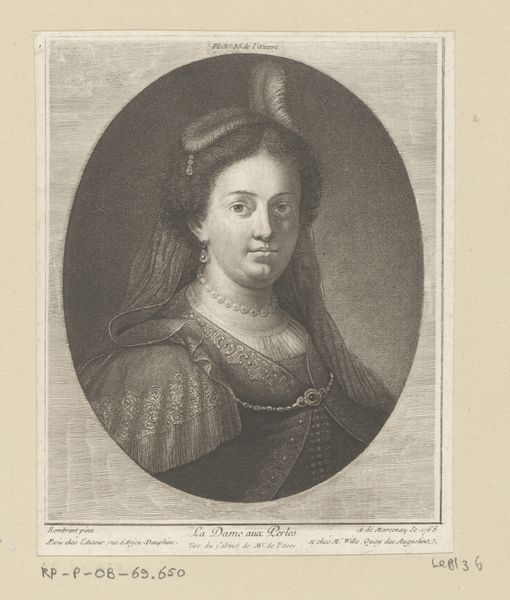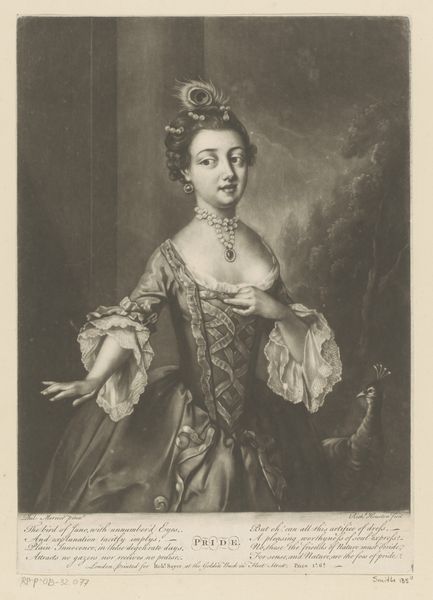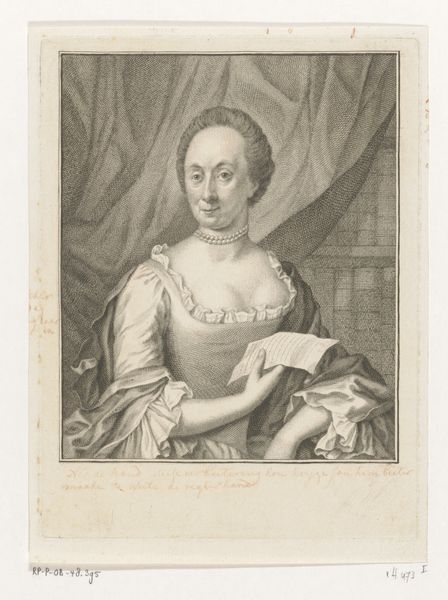
print, engraving
#
portrait
#
neoclacissism
# print
#
genre-painting
#
history-painting
#
academic-art
#
engraving
Dimensions: height 396 mm, width 274 mm
Copyright: Rijks Museum: Open Domain
Curator: Look at this engraving; it presents a demure portrait of Elizabeth Bridgetta Gulston, executed sometime between 1752 and 1822 by Richard Earlom, residing here at the Rijksmuseum. Editor: My immediate reaction is…reserved. The palette is restrained, almost monochromatic. There is a very closed-off quality to the sitter. Curator: Right, Earlom’s engraving technique, recreating texture and tone through line and shadow, gives this piece an intriguing dimensionality for a print. The question for me becomes how Earlom translated Gulston’s likeness to this medium and, ultimately, for whom would such an object have been produced, shared, and consumed? Editor: Well, engravings like these, being easily reproducible, were circulated widely, serving as crucial visual tools to shape public opinion and spread social and political values, don’t you think? Think about who commissioned this work, too—a printed image signifies something vastly different compared to, say, an oil painting intended for a single family. Curator: Precisely! Mass reproduction fundamentally alters an artwork's accessibility and thus, its social function. What I find interesting is how the engraving captures her gown, you can sense its textile properties from its tonality. That level of detail, especially in rendering fabrics and textures, reflects contemporary material culture. The artist is not simply capturing a likeness, but the accouterments and markers of Gulston's status, and it would have been read easily by consumers. Editor: Absolutely. Think about how portraiture, particularly in this era, was deeply tied to status. These images acted almost like visual propaganda for the elite, didn’t they? Framing not just individual identity but confirming the established social hierarchies through their depiction and broad circulation. Curator: Looking closer, it would also be worth exploring the labor practices around printing like this. Earlom worked at a remove, reproducing artworks after they had already been produced. To whom does the art object truly belong here, the engraver who mass produced it, or the painter who did the original image? These prints allowed broader access to artwork, yet further complicated copyright in the market. Editor: A worthwhile consideration. This piece exemplifies how seemingly simple depictions could have profoundly political functions, dictating who gets seen, how they're seen, and for what ends they are ultimately seen by a diverse and engaged public. Curator: I appreciate the additional perspective. Editor: It was lovely speaking about this piece with you.
Comments
No comments
Be the first to comment and join the conversation on the ultimate creative platform.
